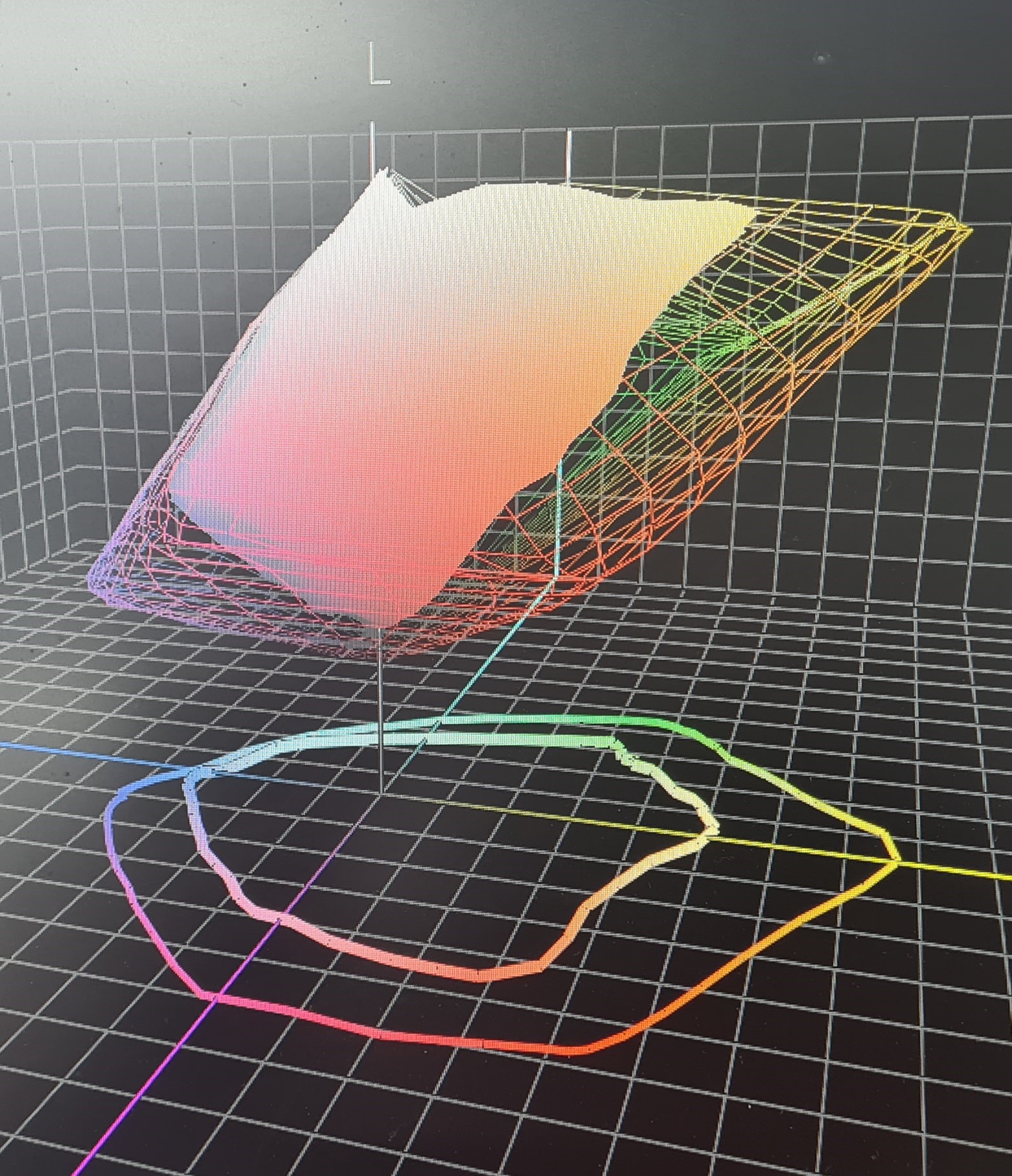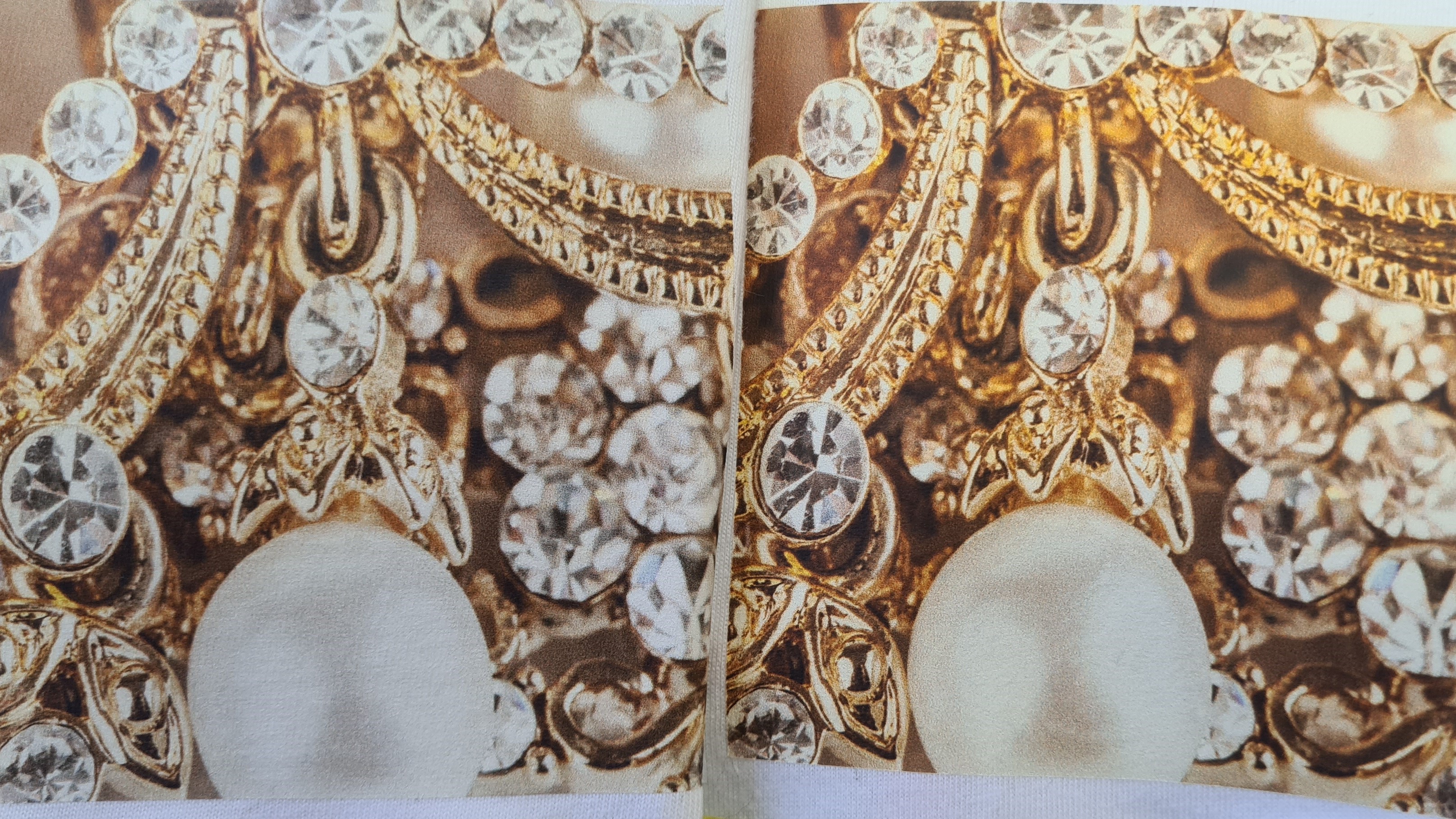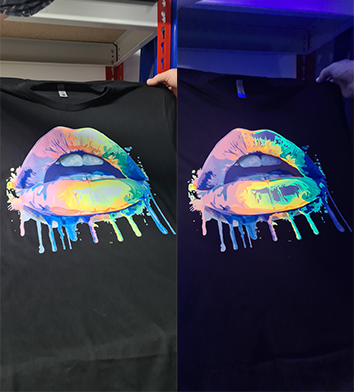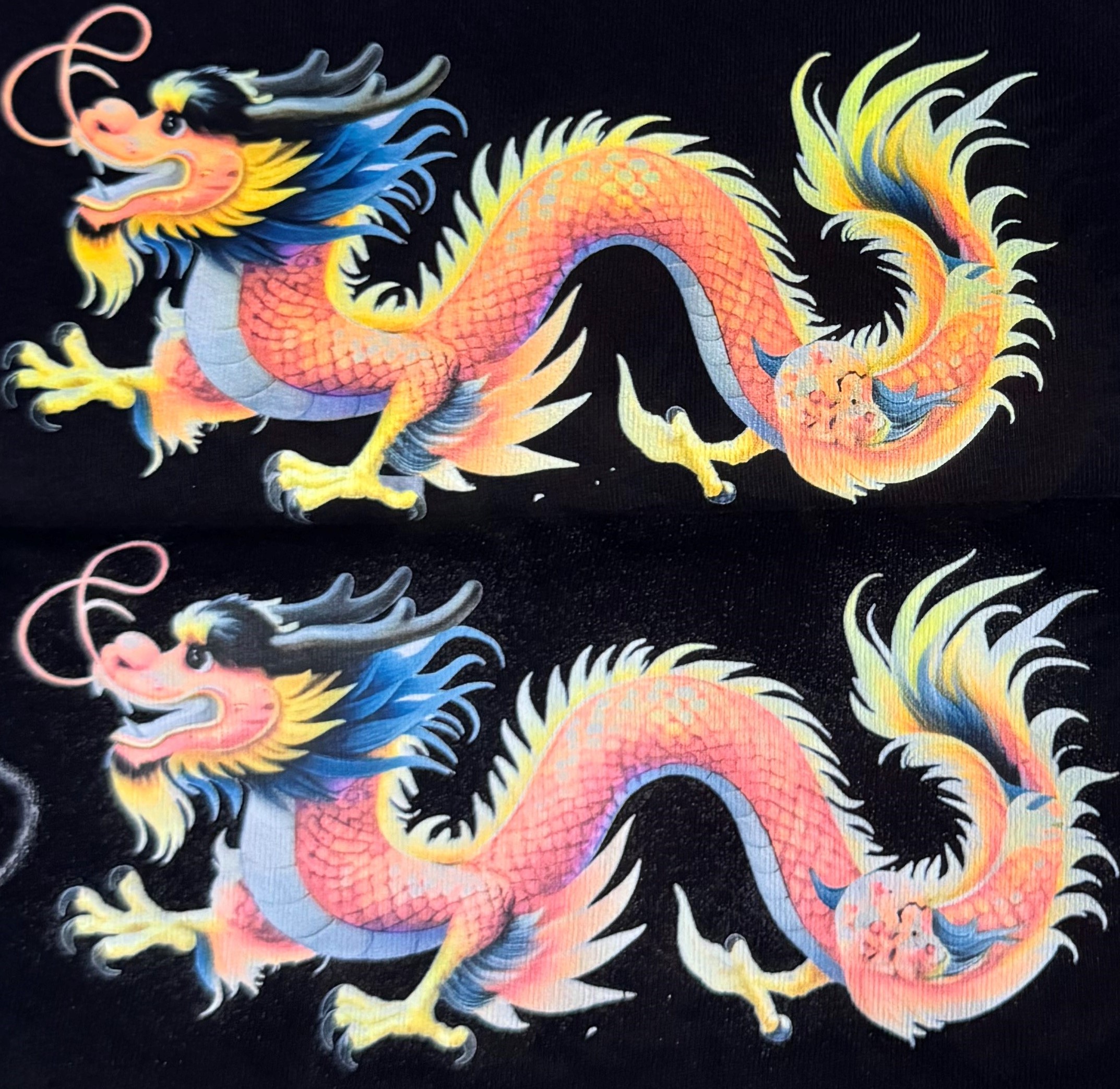Give Your DTF Prints an extra GLOW - David Sweetnam, Lab Director, Keypoint Intelligence
When the DTF revolution began we saw printers pouring out of China all utilising CMYKW ink printings and the same dual Epson printhead configuration. This meant differentiation from one supplier to another was largely down to the printer skillset.
Within a year the DTF evolution saw vendors launching systems three/four printheads. Most promoted this purely as a speed enhancement benefit. However the extra printheads also opened up a new opportunity to go beyond CMYK and W printing, with vendors able to dedicate an entire head or certain channels to new ink colours. Some added light magenta or cyan to improve halftone fill quality. However, most went down the route of expanding the colour space with standard spot colours, and some went even further and introduced neon inks.
What is a Neon Ink?
Neon inks are luminescent. In technical terms Luminescence is the emission of visible or near-visible electromagnetic radiations due to absorption of energy other than heat. To you and I it means “it makes things glows.”
Neon inks are in fact fluorescent which means the emission is immediate and therefore generally only visible if the light source is continuously on (such as UV lights) but does not continue glowing if the light source is turned off.
How do neon inks allow you to differentiate your apparel from a CMYK-only shop?
There is the obvious difference of course, a glow in the dark garment created using neon inks will make you stand out in a nightclub or other destination where black light (UV light) is being used. To those of us who regard nightclubs are a distant blurry memory from younger years this lure might not result in an impulsive credit card purchase. However, neon inks do not just cater to the nightlife crowd, with the vibrant pink, orange, yellows, blues and green colours making designs stand out in daylight and generate that wow factor everyone can appreciate.
How Do Neon Inks Actually Perform?
We have already seen some pretty interesting results on neon capable devices tested to date.
The first device we tested was the Ricoh Pro 10 (also available as the Azon Primo+ Neon X). The 60cm roll fed printer has the standard CMYKW inks plus four neon inks - magenta, yellow, orange and green. The Pro 10 includes print modes that allow printing in just CMYKW mode or CMYKW + neon mode. In the later the neon magenta and yellow are incorporated in the standard icc profile and used in greater of lesser extend in the creation of every colour in the device gamut. All four neon ink colours can also be used in their pure form when spot colour layers are added to the design file.

(fig 1) Wireframe gamut chart showing 27% larger colour space with neon inks versus the solid CMYK only print profile
As expected, using the CMYKW+neon mode provided a larger colour gamut, in fact we measured a colour space 27% larger in HQ mode when printing on white t-shirts (see fig 1). This larger colour space reflected in the reproduction of more realistic metallics (see fig 2), healthier skin tones and brighter memory colours. It also resulted in superior colour matching, with Home Depot Orange (PANTONE 165C) dropping from a 7.24 DeltaE in CMYKW mode to an incredible 2.56 in CMYKW+neon mode.

(fig 2) Richer gold metallics with neon inks on the right versus CMYK only image on the left
The second printer with ‘glow-power’ under test is the Pronto Neon from Croatian vendor Azon. This compact desktop device comes with four colour channels plus white ink, with the standard magenta and yellow inks being replaced by neon equivalents. There is a second model in the Pronto series that does use standard CMYK inks. Azon advises that the Neon version makes up 70% of Pronto sales which is not surprising as the device offers something unique for the ‘Etsy’-style small business. One of the user-friendly features we liked on the Pronto Neon was that there is no need to create spot colours layers to get maximum neon impact, a benefit that will be appreciated by small shops that may not have a graphic artist. (see fig 3)

(fig3) Daylight (left) and Night time under UV (right) small
However, It is not all rainbows and unicorns. The switch out of standard magenta and yellow inks does come with its limitations. The device is not suitable for some work involving realistic colours like skin tones, foods or spot colour matching brand work.
How Do Neon inks Stand Up To Prolonged Washing?
Due to the more challenging chemical nature of photoluminescence inks we were interested to see how well they stood up to repeated wash / tumble dry cycles. We were pleasantly surprised to see that even after twenty cycles the quality of the garments printed on the Azon Pronto Neon were still at a very high level with no fine detail degradation and excellent stretch resistance. The colour gamut had shrunk a little more than average and the luminescence under UV light was marginally less intense, having said that, the impact is minor and a clubber would still look great dancing the night away. (see fig 4)

(fig 4) Luminescence after 20 washes (bottom) versus unwashed (top)
Is the market embracing neon inks?
I ran a poll on LinkedIn to see where the market was in terms of embracing neon. 25% of the responders indicated they either had or were looking to buy neon in the next 12 months. Interesting, only 18% thought that neon ink could command a higher premium that CMYK alone. That is not to say that neon ink could not open up new doors or help close sales, just take a look at this conversation I had with a senior graphic designer when she realised the extra creative options neon could add to her client offerings.
We look forward to seeing how the neon ink market evolves and have more neon-capable devices lined up for testing in the near future including Chinese vendor Keditec with a device sporting 13 (yes thirteen) colours. If you want to have your neon capable device tested just connect to me via LinkedIn.
For more information contact David.sweetnam@keypointintelligence.com

About Keypoint Intelligence
Keypoint Intelligence is a global leader and authoritative provider of test-based analytical information, market intelligence and sales enablement to the digital imaging and print industry. Along with providing clients access to a range of SaaS tools and platforms, Keypoint offers the most comprehensive independent research and data in the industry.
